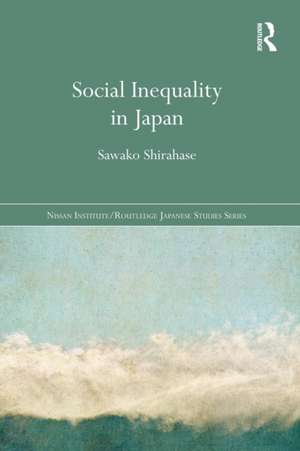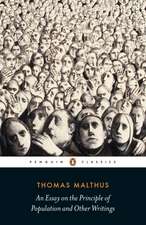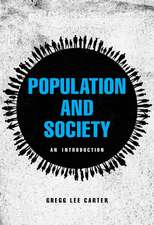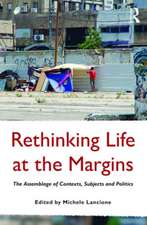Social Inequality in Japan: Nissan Institute/Routledge Japanese Studies
Autor Sawako Shirahaseen Limba Engleză Paperback – 4 aug 2015
This book compares Japan with America, Britain, Italy, France, Germany, Sweden and Taiwan in order to determine whether inequality really is a social problem in Japan. With a focus on impact demographic shifts, Sawako Shirahase examines female labour market participation, income inequality among households with children, the state of the family, generational change, single person households and income distribution among the aged, and asks whether increasing inequality and is uniquely Japanese, or if it is a social problem common across all of the societies included in this study. Crucially, this book shows that Japan is distinctive not in terms of the degree of inequality in the society, but rather, in how acutely inequality is perceived. Further, the data shows that Japan differs from the other countries examined in terms of the gender gap in both the labour market and the family, and in inequality among single-person households – single men and women, including lifelong bachelors and spinsters – and also among single parent households, who pay a heavy price for having deviated from the expected pattern of life in Japan.
Drawing on extensive empirical data, this book will be of great interest to students and scholars interested in Japanese culture and society, Japanese studies and social policy more generally.
| Toate formatele și edițiile | Preț | Express |
|---|---|---|
| Paperback (1) | 413.33 lei 6-8 săpt. | |
| Taylor & Francis – 4 aug 2015 | 413.33 lei 6-8 săpt. | |
| Hardback (1) | 1061.57 lei 6-8 săpt. | |
| Taylor & Francis – 11 dec 2013 | 1061.57 lei 6-8 săpt. |
Din seria Nissan Institute/Routledge Japanese Studies
-
 Preț: 286.69 lei
Preț: 286.69 lei -
 Preț: 318.39 lei
Preț: 318.39 lei - 9%
 Preț: 1003.95 lei
Preț: 1003.95 lei -
 Preț: 289.04 lei
Preț: 289.04 lei - 25%
 Preț: 852.53 lei
Preț: 852.53 lei -
 Preț: 495.94 lei
Preț: 495.94 lei -
 Preț: 486.42 lei
Preț: 486.42 lei -
 Preț: 271.61 lei
Preț: 271.61 lei -
 Preț: 420.08 lei
Preț: 420.08 lei - 18%
 Preț: 1057.40 lei
Preț: 1057.40 lei -
 Preț: 465.49 lei
Preț: 465.49 lei -
 Preț: 414.39 lei
Preț: 414.39 lei - 18%
 Preț: 1003.30 lei
Preț: 1003.30 lei - 18%
 Preț: 1056.80 lei
Preț: 1056.80 lei -
 Preț: 465.69 lei
Preț: 465.69 lei -
 Preț: 415.24 lei
Preț: 415.24 lei -
 Preț: 485.40 lei
Preț: 485.40 lei - 13%
 Preț: 298.13 lei
Preț: 298.13 lei - 18%
 Preț: 1061.57 lei
Preț: 1061.57 lei - 18%
 Preț: 1105.56 lei
Preț: 1105.56 lei - 18%
 Preț: 1058.43 lei
Preț: 1058.43 lei - 18%
 Preț: 1058.79 lei
Preț: 1058.79 lei - 18%
 Preț: 1168.76 lei
Preț: 1168.76 lei - 15%
 Preț: 538.45 lei
Preț: 538.45 lei -
 Preț: 415.67 lei
Preț: 415.67 lei - 28%
 Preț: 820.32 lei
Preț: 820.32 lei - 15%
 Preț: 511.27 lei
Preț: 511.27 lei -
 Preț: 492.11 lei
Preț: 492.11 lei - 18%
 Preț: 1271.47 lei
Preț: 1271.47 lei -
 Preț: 438.47 lei
Preț: 438.47 lei -
 Preț: 451.16 lei
Preț: 451.16 lei - 23%
 Preț: 342.12 lei
Preț: 342.12 lei -
 Preț: 408.54 lei
Preț: 408.54 lei - 18%
 Preț: 948.21 lei
Preț: 948.21 lei -
 Preț: 412.37 lei
Preț: 412.37 lei - 27%
 Preț: 1001.60 lei
Preț: 1001.60 lei - 18%
 Preț: 1061.57 lei
Preț: 1061.57 lei - 26%
 Preț: 849.77 lei
Preț: 849.77 lei - 26%
 Preț: 820.73 lei
Preț: 820.73 lei - 18%
 Preț: 1057.05 lei
Preț: 1057.05 lei - 18%
 Preț: 1390.04 lei
Preț: 1390.04 lei - 18%
 Preț: 777.75 lei
Preț: 777.75 lei
Preț: 413.33 lei
Nou
Puncte Express: 620
Preț estimativ în valută:
79.09€ • 82.75$ • 65.70£
79.09€ • 82.75$ • 65.70£
Carte tipărită la comandă
Livrare economică 02-16 aprilie
Preluare comenzi: 021 569.72.76
Specificații
ISBN-13: 9781138120808
ISBN-10: 1138120804
Pagini: 244
Ilustrații: 73 black & white illustrations, 29 black & white tables, 73 black & white line drawings
Dimensiuni: 156 x 234 x 21 mm
Greutate: 0.37 kg
Ediția:1
Editura: Taylor & Francis
Colecția Routledge
Seria Nissan Institute/Routledge Japanese Studies
Locul publicării:Oxford, United Kingdom
ISBN-10: 1138120804
Pagini: 244
Ilustrații: 73 black & white illustrations, 29 black & white tables, 73 black & white line drawings
Dimensiuni: 156 x 234 x 21 mm
Greutate: 0.37 kg
Ediția:1
Editura: Taylor & Francis
Colecția Routledge
Seria Nissan Institute/Routledge Japanese Studies
Locul publicării:Oxford, United Kingdom
Public țintă
Postgraduate and UndergraduateCuprins
Introduction: Japan Compared 1. Japan: How Much Inequality? 2. Female Labor Force Participation and Economic Inequality 3. Economic Inequality among Families with Children 4. Youngsters who Won’t Leave the Nest 5. Mothers Going Out to Work: Perceptions, Attitudes and their Institutional Background 6. Where Do Old People Live?: Ageing and Household Structure 7. Old People Living Alone and Those in Three-generation 8. Conclusion: Life Course and Inequality
Notă biografică
Sawako Shirahase is Professor in the Department of Sociology at the University of Tokyo, Japan.
Recenzii
"Shirahase's focus on recent demographic shifts, particularly female labor force participation and the aging of the population, is quite detailed and valuable for scholars. Summing Up: Recommended." – L.Miller, University of Missouri-St. Louis in CHOICE
Descriere
This book compares Japan with America, Britain, Italy, France, Germany, Sweden and Taiwan in order to determine whether inequality really is a social problem in Japan. With a focus on impact demographic shifts, Shirahase asks whether increasing inequality and is uniquely Japanese, or if it is a social problem common across all of the societies included in this study. Crucially, this book shows that Japan is distinctive not in terms of the degree of inequality in the society, but rather, in how acutely inequality is perceived.

















